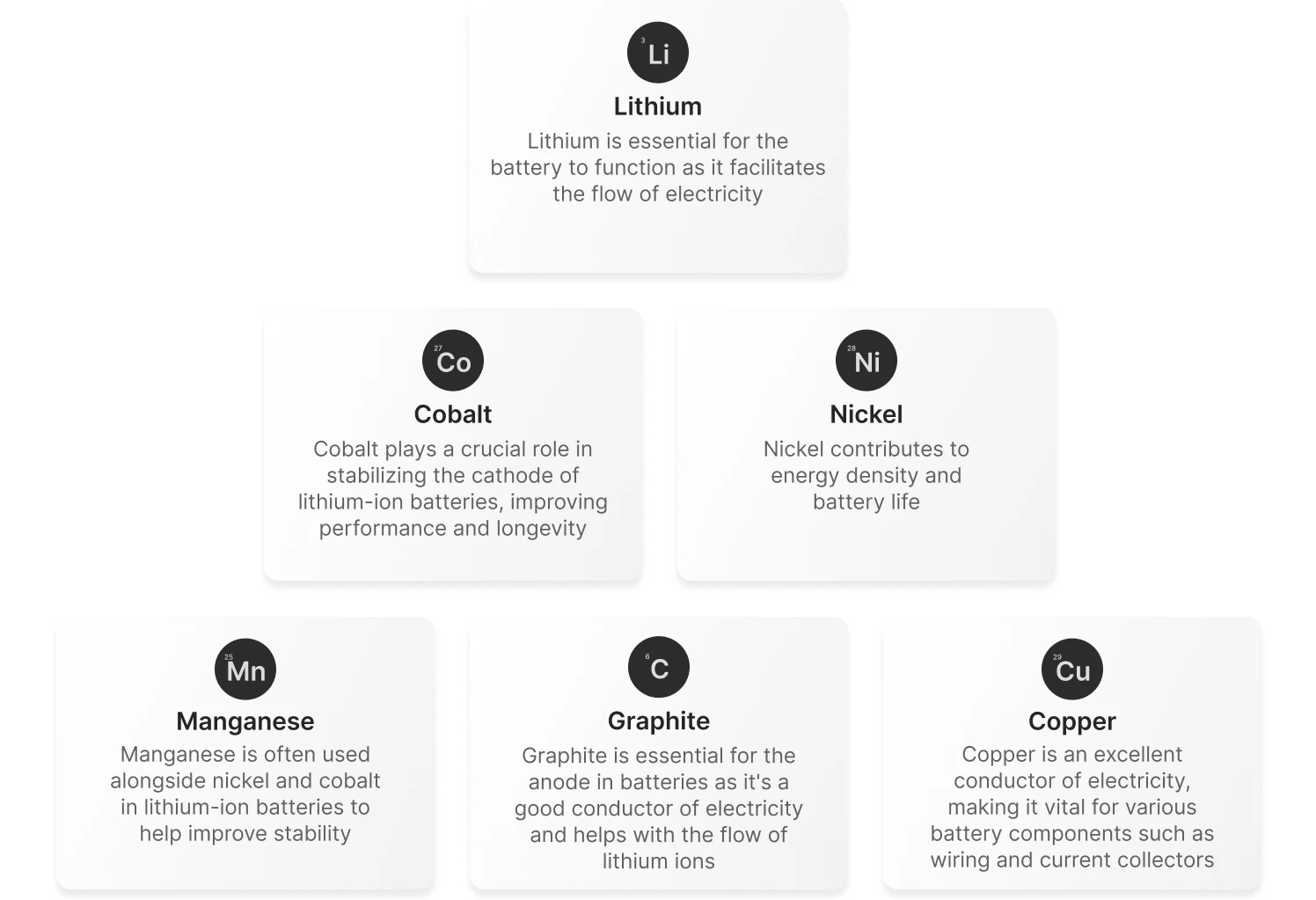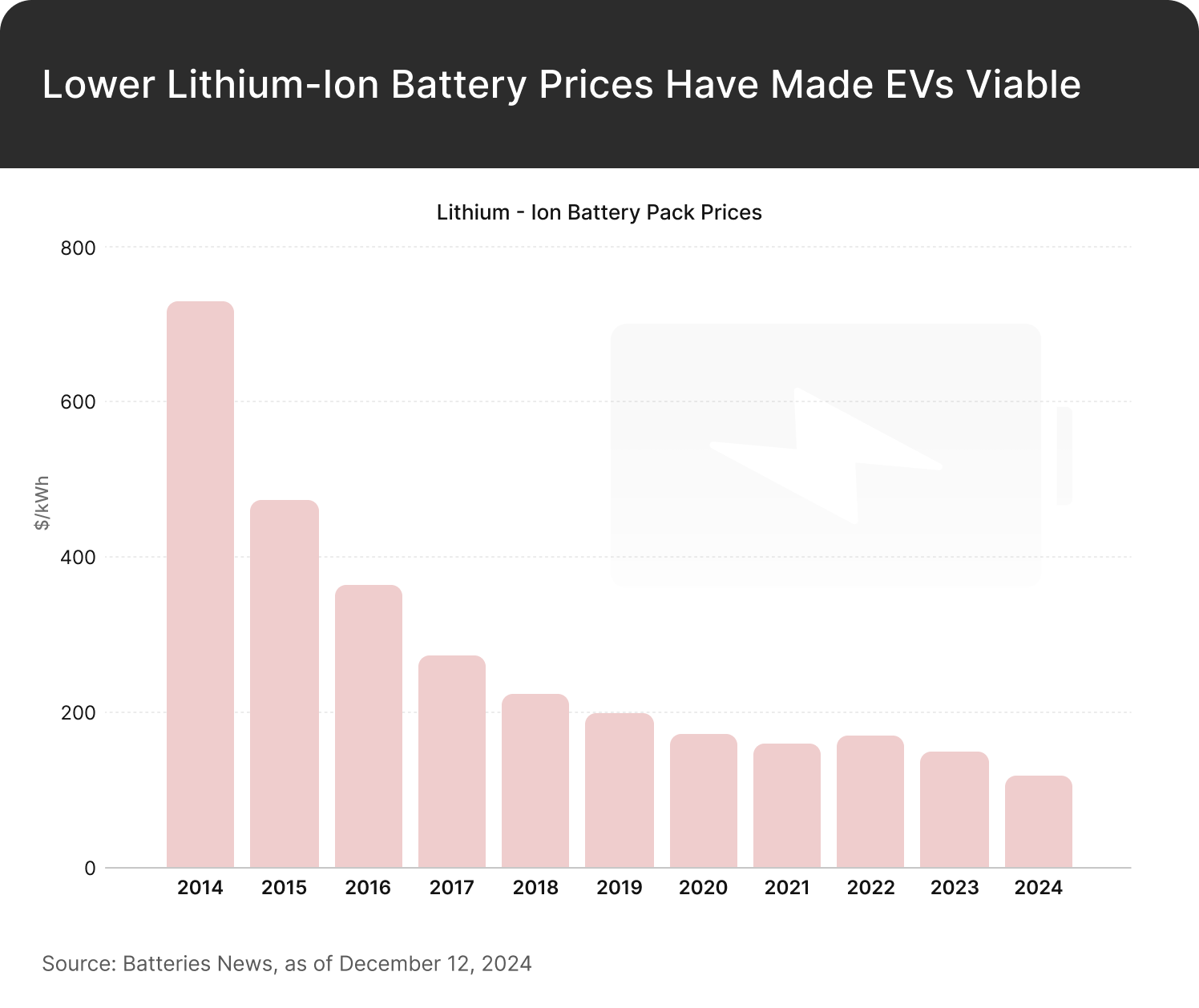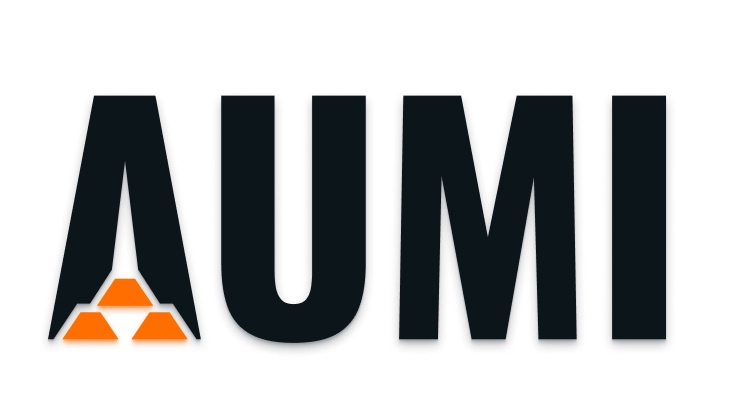Lithium is Powering the EV Revolution
Today, the vast majority of electric vehicles (EVs) use lithium-ion batteries. These batteries have a high power-to-weight ratio and offer good high-temperature performance. And in recent years, the cost of these batteries has come down significantly. This has made it possible for automotive manufacturers to produce EVs at reasonable prices.
EV Market Growth and the Demand for Batteries
The electric vehicle market is projected to grow at a compound annual growth rate (CAGR) of 23% in the years ahead to be worth $2,453 billion by 2034. This growth is expected to be driven by a combination of factors including favorable government regulations and incentives, expansion of charging infrastructure, lower vehicle prices, and a shift towards sustainable mobility. As the EV market expands, the EV battery market is likely to expand too. According to Zion Market Research, the EV battery market is set to be worth $215.5 billion by 2030, up from $56.4 billion in 2022.
The Lithium Supply Shortage
Looking ahead, analysts expect demand for lithium to rise significantly on the back of the global EV boom. According to the International Energy Agency (IEA), the growth of the EV market could see lithium demand increase by up to 40 times1 by 2040. This could lead to significant supply shortages in the coming years. The IEA forecasts that by 2030, supply will meet less than 70%2 of global demand. For EV manufacturers, lithium supply shortages pose a major threat. So much so that Tesla is currently building its own lithium refinery in Texas. This will convert lithium-containing ore into lithium hydroxide – a key ingredient for EV batteries. Tesla’s move to build its own lithium plant shows the company’s commitment to securing a reliable supply of this crucial battery metal and is a major step towards reducing reliance on foreign lithium producers, especially China.
The Growing Demand for Batteries
Batteries are not a new technology. For decades, they have powered electronic devices such as laptops, mobile phones, watches, calculators, and power tools. However, thanks to recent advances in battery technology, and the shift from heavy lead-acid and cadmium batteries to high-powered lithium-ion batteries, they’re now playing a much larger role in the global economy. Today, lithium-ion batteries can be found in everything from Bluetooth headphones to personal medical devices such as hearing aids.
Looking ahead, the market for batteries is projected to grow substantially. Alongside the growth of the electric vehicle market, the global shift to renewable energy is expected to be a major growth driver. If the world is to make the shift to clean energy and move away from fossil fuels, there will need to be considerable investment in energy storage systems, which enable energy from renewables such as solar and wind to be stored and released later on. These play a vital role in the clean energy ecosystem as there are times when the sun isn’t shining, or wind speeds are low. Given that lithium-ion batteries can store a lot of energy in a relatively small space, they are ideal for energy storage systems. So, they are likely to be used in both small-scale (residential) and large-scale (grid-level) energy storage applications in the future.
6 Critical Metals Required for Lithium-Ion Batteries

The Themes Lithium & Battery Metal Miners ETF
The Themes Lithium & Battery Metal Miners ETF (LIMI) seeks to track the BITA Global Lithium and Battery Metals Index (BGLISI), which identifies companies that derive their revenues from lithium and battery metals mining, explorations, refining, and royalties. Designed for those who are looking for portfolio exposure to battery metals, this ETF provides access to around 50 different companies involved in the mining and production of such metals.
Footnotes:
1Precedence Research, Electric Vehicle Market Size, Share and Trends 2025 to 2034, as of January 15, 2025
2IEA, Anticipated supply and projected demand for lithium in the Net Zero Scenario, 2030, as of September 22, 2023








